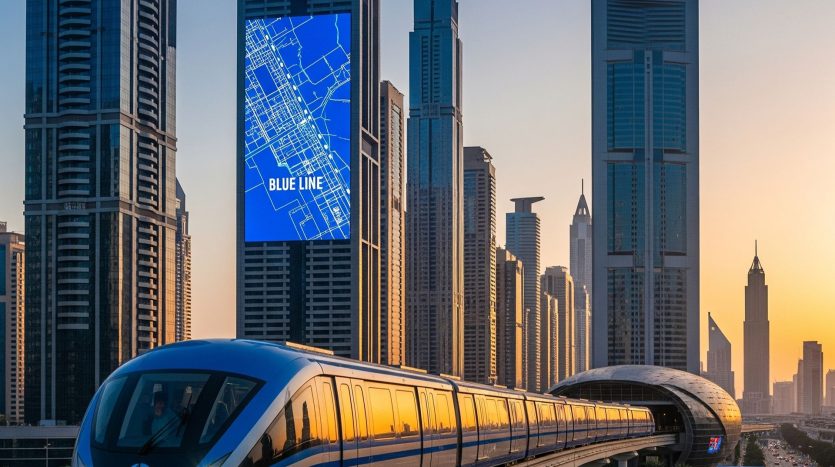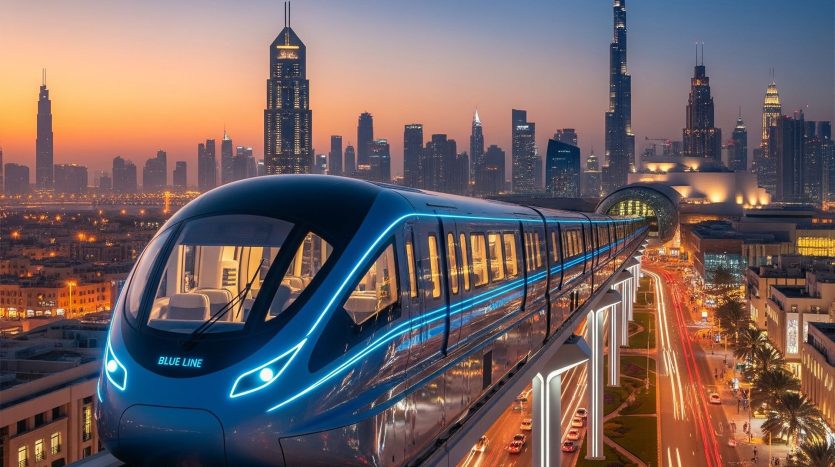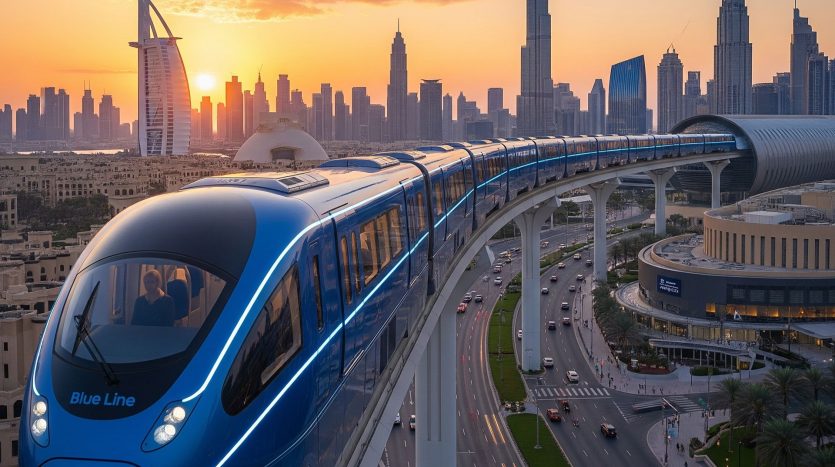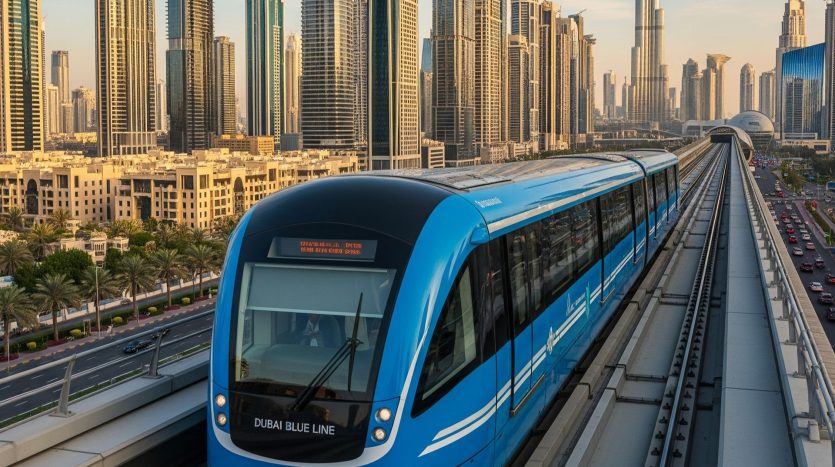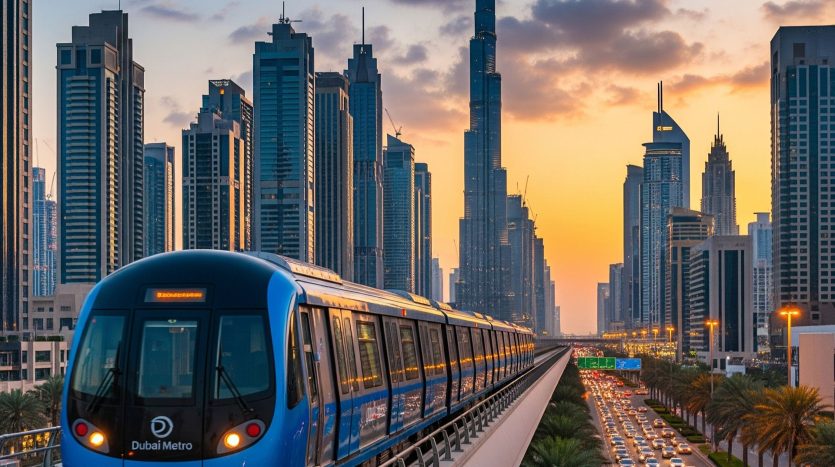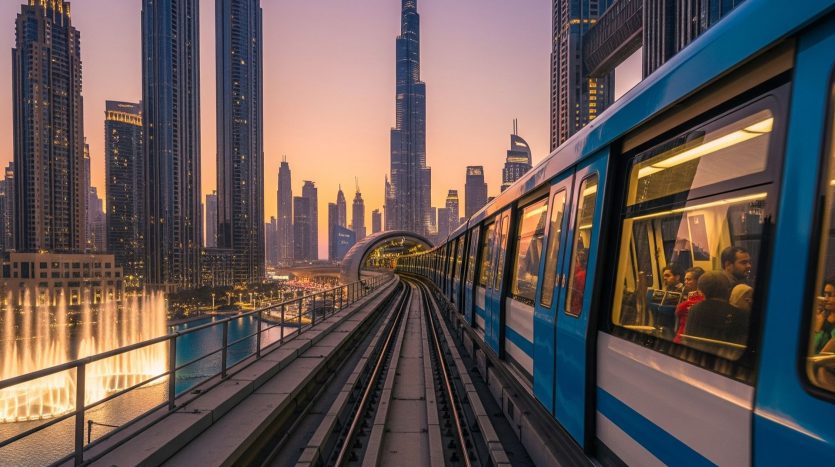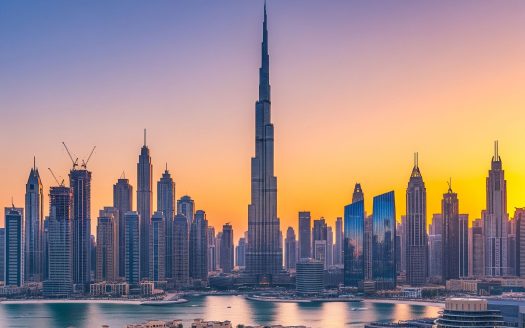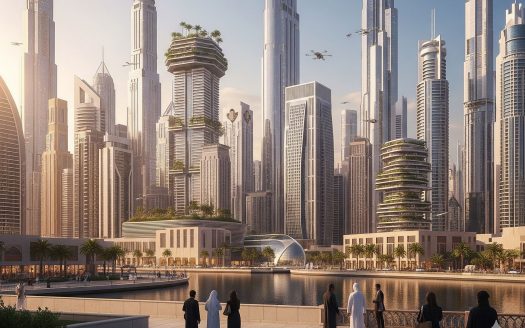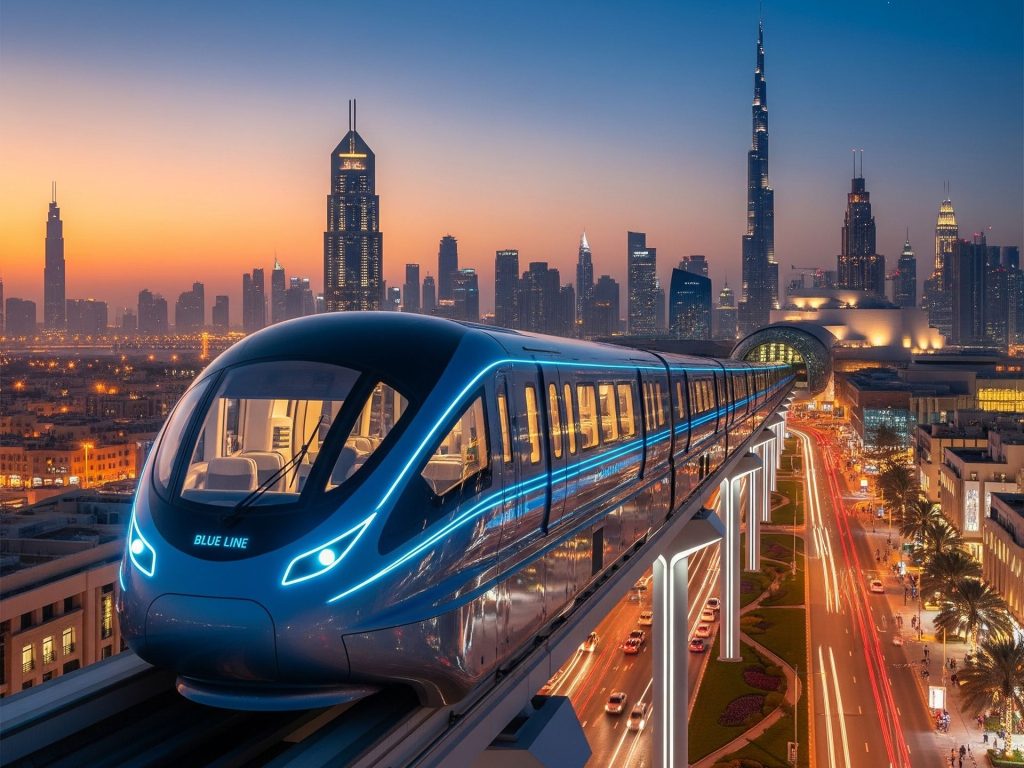
The Metro Effect: Why Dubai’s Blue Line Could Deliver the Strongest Returns of the Decade
A New Phase of Growth
The Dubai Metro Blue Line is scheduled to open in September 2029. Since approval in November 2023, average rents in nine connected communities have already risen about 23 percent, with forecasts pointing to a further 25–30 percent before the first trains run. This early movement signals what has historically been one of Dubai real estate’s strongest catalysts: transport connectivity.
Scale and Connectivity
The Blue Line spans 30 km with 14 stations, linking to the Red Line at Centrepoint and the Green Line at Creek. Once complete, the Dubai Metro network will reach 131 km, with 78 stations and 168 trains in operation. Designed to carry up to 850,000 passengers daily, ridership forecasts project 200,000 passengers by 2030 and 320,000 by 2040.
The network is expected to cut road congestion by 20 percent and connect residential districts to Dubai International Airport in just 10–25 minutes. As part of the Dubai 2040 Urban Master Plan, the Blue Line advances the vision of a “20-minute city,” where most daily needs are within a short commute.
Landmark Features
The project brings several firsts to Dubai’s transport infrastructure. The opening station will be the world’s highest metro station, rising 74 metres, designed by Skidmore, Owings & Merrill (SOM), the architects behind the Burj Khalifa. Trains will cross a 1,300-metre viaduct over Dubai Creek, creating an iconic addition to the skyline. In another milestone, Emaar has secured naming rights for the first station for ten years, beginning at the 2029 inauguration.
Early Market Reactions
Since the Blue Line was announced, rent increases have been sharpest in communities along its route:
- Academic City: studio rents up 43% (AED 42,000 → AED 60,000).
- Dubai Creek Harbour: +30%.
- Al Warqa and Dubai Silicon Oasis: +28%.
- International City 1 and 2: +22%.
- Ras Al Khor Industrial Area: +21%.
- Mirdif and Dubai Festival City: +15%.
The average uplift across the nine districts is 23 percent, and market guidance points to an additional 25–30 percent before the line opens. Smaller units, especially studios and one-bedroom apartments, are leading this surge, while family housing is expected to follow as the line nears completion.
Lessons from the Red Line
The Blue Line’s potential becomes clearer when viewed against history. CBRE’s study of the Red Line, launched in 2009, found that from 2010 to 2022, homes within a 15-minute walk appreciated by 26.7 percent, compared to 24.1 percent citywide. Rental data from 2018 to 2022 shows properties near stations gained 5.7 percent, while the wider market fell 4.1 percent. Notably, the 10–15 minute walk zone showed the strongest rental growth at 11.7 percent.
This “metro premium” is not speculative—it has been proven over a decade of market performance.
Economic Benefits and Wider Impact
The Blue Line is projected to generate a benefit-cost ratio of 2.6, delivering more than AED 56.5 billion in economic benefits by 2040. These gains will come from reduced travel times, lower fuel consumption, fewer accidents, and reduced emissions.
For property, the forecast is equally strong: land and homes within proximity of Blue Line stations are expected to appreciate by up to 25 percent.
Demographic Drivers
Behind this surge lies Dubai’s population growth. The emirate crossed 4 million residents in 2025 and is on track to reach 5 million by 2030. That means 1 million additional residents in less than a decade, driving demand for 350,000 to 500,000 new homes. The Blue Line’s corridor, designed to accommodate over one million residents under the Urban Master Plan, will be at the heart of this expansion.
The Investor’s Window
-
For investors, the Blue Line offers three clear opportunities:
-
Capital growth, with properties near stations historically outperforming the market.
-
Rental resilience, as tenants increasingly prioritize accessibility and convenience.
-
Portfolio diversity, with the corridor serving both affordable and mid-market communities, alongside premium hubs like Dubai Creek Harbour—making it a strategic choice for investors and those working with experienced property agents in Dubai.
-
Conclusion
The Metro Blue Line is more than a transport upgrade. It is a structural driver of value across multiple districts, combining proven “metro premiums” with Dubai’s strong demographic and economic fundamentals. With rents already up 23 percent, forecasts of another 25–30 percent, and long-term economic benefits exceeding AED 56.5 billion, the Blue Line stands out as one of the most compelling investment stories of the decade.
References
Khaleej Times (June 2025) – Dubai Metro Blue Line rents in 9 communities jump up to 43%: https://www.khaleejtimes.com/business/property/dubai-metro-blue-line-rents-in-9-communities-jump-up-to-43-percent
Khaleej Times (June 2025) – Dubai Metro Blue Line: First station, train capacity, key features explained: https://www.khaleejtimes.com/uae/transport/dubai-metro-blue-line-new-details-revealed
CBRE Dubai Metro Report (2023): https://www.cbre.ae/press-releases/dubai-metro-report-2023

